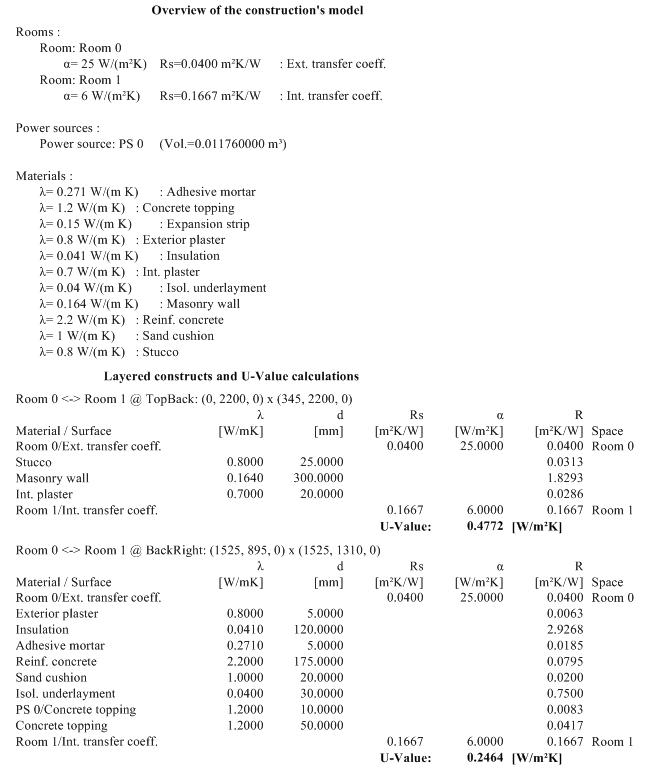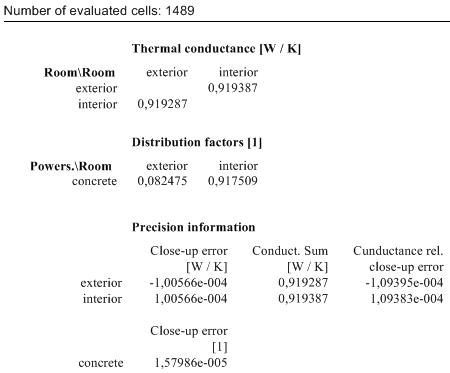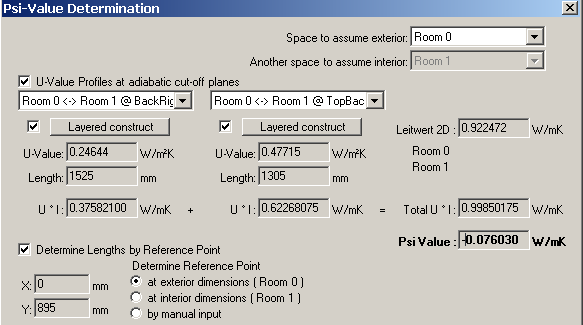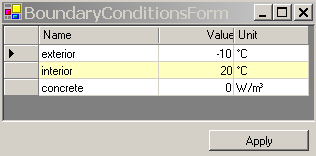Obtaining basic results - evaluation
First characteristics of the component can be obtained immediately without any special
calculations - materials and properties used within the model plus
characteristic U-Values at profiles near to adiabatic boundaries.
To receive this basic documentation select View→Data Input&Entry→Modelling Report and check
characteristics of the model:

To receive further results some calculation is required.
Activate the main menu Results... option.
You will be asked to save the project data and to provide fine-grid and solver parameters. Confirm all the three dialogs with Ok. Default parameters for fine-grid and solver are sufficient for most cases and thus to complete this tutorial.
The construction file of a model must be accompanied by a grid file for calculation in the next branch of the program. Based on standard parameters, a grid file of the current model is generated. The calculation branch is automatically started. Convergence behaviour of the iterative calculation process is displayed in the form of running status messages.
As soon as the calculation of base solutions has been terminated successfully, the Conductance-Matrix-Report is generated and shown. Also a Boundary-Conditions window is revealed to receive your input for further evaluation steps - covered just below.

Note: The conductance matrix results shown here are only "borderline acceptable" in terms of precision. For some purposes, a re-calculation of the base solutions with a more stringent termination condition may be called for at this point, before continuing with evaluation. For a demonstration object, however, the precision of these results will suffice.
The table of heat source distribution factors is printed out separately. These results imply that the heat source, i.e. the simulated electric heating assembly meant to heat space "concrete", would lose approximately 8% of its power to the exterior space - without flooring over the concrete topping.
Note: Just as the conductance matrix, the heat source distribution factors are condition-independent, i.e. valid for any temperatures and source powers of evaluation.
Activate View→Windows→Psi-Value Determination menu.

Calculating the Psi-Value (linear thermal transmittance) characteristic for that component is still independent from any boundary conditions too.
Obtaining results dependant on particular boundary conditions (space air temperatures and power source intensities) requires the input of that data at first:

The heat source is thus "turned off" for the first round of evaluation. Confirm the set of boundary conditions by clicking at Apply on the Boundary Conditions window.
After a short waiting period, during which the temperature distribution in the component is calculated by the program, the following results are shown in Results-Report.

Note: Though weighting factors (g-Values) as a whole are not dependant on boundary conditions, they are included here in association with the coldest surface points (the location of which is in general condition-dependant).
> Continue reading with "Graphic results" ...